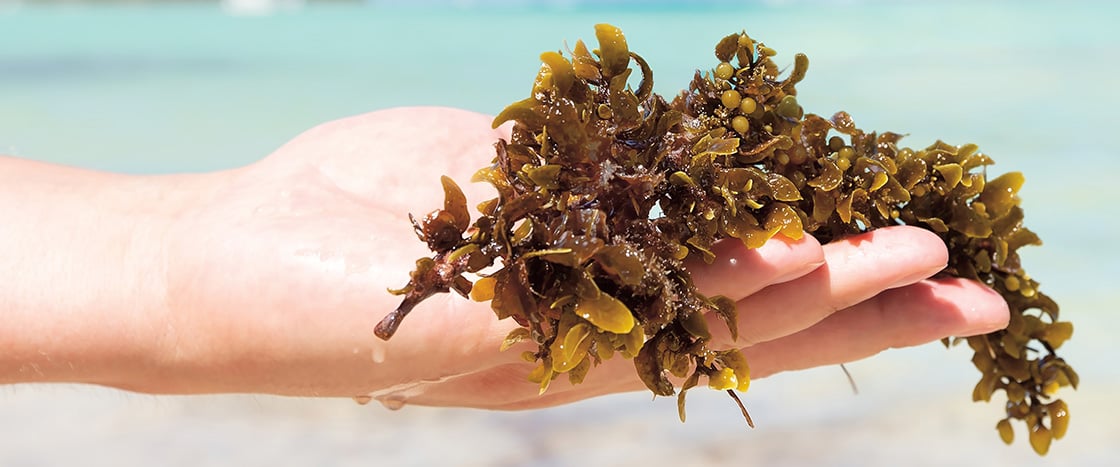On a chilly March morning, farmer Charlie Delius puts on warm pants and sturdy rubber boots. He slips on a bright-orange life jacket and hops into a motorboat. Unlike most farmers, Delius doesn’t work on land. His farm floats in the ocean! And the crop he grows is seaweed.
Seaweed is a plantlike organism that grows in water. (See Plant vs. Seaweed) There are more than 10,000 species of seaweed. Many people only see it when it washes up on the beach. You might think it’s icky or annoying. And Delius doesn’t blame you! “It’s kind of slimy and really slippery if you step on it,” he says. But a growing number of people see it as an Earth-friendly crop with all kinds of exciting uses.
Delius works at Blue Dot Sea Farms in Hood Head, Washington. Every year, he and his crew grow 15,000 pounds (6,800 kilograms) of a type of seaweed called kelp. Their harvest is sold to restaurants and turned into a crunchy snack food. Other farmers grow seaweed to turn into fertilizer, animal feed, and even products such as shoes and skateboards!
It’s a chilly March morning. Charlie Delius puts on warm pants. He pulls on sturdy rubber boots. He slips on a bright-orange life jacket. Then he hops into a motorboat. Delius is a farmer. But he doesn’t work on land. His farm floats in the ocean! The crop he grows is seaweed.
Seaweed is a plantlike organism. It grows in water. (See Plant vs. Seaweed) There are more than 10,000 seaweed species. Many people see seaweed only when it washes up on the beach. You might think it’s icky or annoying. And Delius doesn’t blame you! “It’s kind of slimy and really slippery if you step on it,” he says. But more people see it as an Earth-friendly crop. And it has all kinds of exciting uses.
Delius works at Blue Dot Sea Farms. It’s in Hood Head, Washington. Every year, he and his crew grow 15,000 pounds (6,800 kilograms) of kelp. It’s a type of seaweed. Their harvest is sold to restaurants. It’s also turned into a crunchy snack food. Other farmers grow seaweed to turn into fertilizer or animal feed. Seaweed is even used to make shoes and skateboards!

